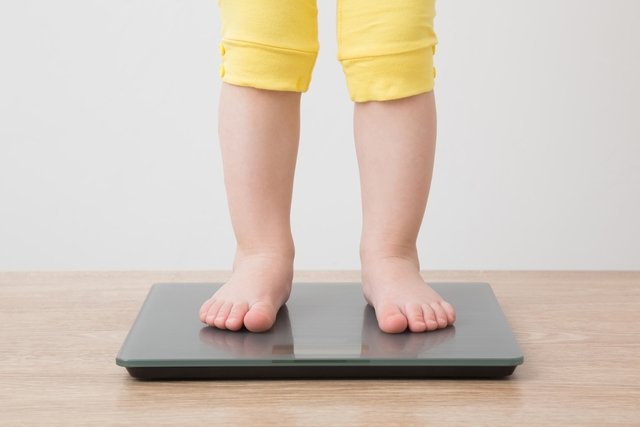Child malnutrition occurs when there is a deficiency of nutrients in the child’s body, which can happen due to incorrect nutrition, food deprivation or changes in the gastrointestinal tract, such as Crohn’s disease and ulcerative colitis, for example, in which the absorption of nutrients can be harmed.
Thus, as a consequence of the deficiency of vitamins and minerals that are essential for the proper functioning of the body, it is possible to notice the appearance of symptoms such as excessive tiredness, drier skin, the occurrence of infections more frequently and delays in the child’s growth and development.
It is important that as soon as signs and symptoms suggestive of malnutrition are noticed, the pediatrician is consulted, as this makes it possible to assess the child’s weight in relation to their age and height, diagnose malnutrition and refer the child to a nutritionist so that nutritional needs can be identified and an appropriate eating plan can be established for the child.

Symptoms of child malnutrition
The main signs and symptoms of child malnutrition are:
- Excessive tiredness;
- Dryer, paler skin;
- Delay in the child’s development;
- Greater ease of getting infections, as the immune system is weaker;
- Irritability;
- Slower healing;
- Loss of hair;
- Lack of strength;
- Decrease in muscle mass;
- Shortness of breath and energy, especially if there is also anemia.
Furthermore, in some cases, especially when malnutrition is very severe, there may also be impairment in the function of some organs, such as the liver, lungs and heart, which can put the child’s life at risk.
It is important that the pediatrician is consulted as soon as signs and symptoms that indicate malnutrition are identified, as this means that tests can be carried out to help confirm the diagnosis and the most appropriate treatment can be initiated to avoid possible complications of malnutrition. such as changes in growth, organ failure and changes in the nervous system. See more about the complications of malnutrition.
How the diagnosis is made
The diagnosis of child malnutrition is made by the pediatrician based on the evaluation of the signs and symptoms presented by the child. In addition, a physical examination is carried out on the child, in which the child’s abdominal circumference and head circumference, weight and height are assessed, and the child’s growth curve is checked.
An assessment of nutritional history and blood and urine tests may also be carried out.
It is important to keep in mind that although malnutrition is normally associated with thinness, it is possible that children who are overweight for their age are also malnourished, as it is a situation caused by a lack of vitamins and minerals.
Main causes
The main causes of child malnutrition are:
- Early weaning;
- Nutritionally poor food;
- Frequent intestinal infections with symptoms of diarrhea and vomiting;
- Changes in the gastrointestinal system, such as Crohn’s disease, ulcerative colitis and celiac disease;
- Eating disorders such as anorexia and bulimia.
Furthermore, socioeconomic conditions, low level of education, inadequate basic sanitation conditions and the weak bond between mother and child can also result in malnutrition.
What is the treatment like?
Treatment for child malnutrition must be guided by a pediatrician and nutritionist and aims to combat the symptoms of malnutrition, provide the nutrients necessary for the child’s healthy growth and promote their quality of life.
Therefore, depending on the level of malnutrition and the nutrients that are lacking, it may be recommended to change eating habits and gradually include some foods. Furthermore, in the case of children who are unable to eat a more solid diet, the consumption of more pasty or liquid foods may be recommended, as well as supplements, to ensure nutritional needs.
In cases of severe malnutrition, it may be necessary for the child to be admitted to the hospital so that feeding can be done through a tube and complications can be prevented.
Bibliography
- DOCTORS WITHOUT BORDERS. Malnutrition. Available at: <https://www.msf.org.br/o-que-fazemos/atividades-medicas/desnutricao>. Accessed on October 19, 2020
- SILVA, Roberta P. Child malnutrition: a problem to be faced. Specialization thesis, 2012. Federal University of Minas Gerais.
- MINISTRY OF HEALTH. Malnutrition. Available at: <https://aps.saude.gov.br/ape/pcan/desnutricao>. Accessed on October 19, 2020

Sign up for our newsletter and stay up to date with exclusive news
that can transform your routine!
Warning: Undefined array key "title" in /home/storelat/public_html/wp-content/plugins/link-whisper-premium/templates/frontend/related-posts.php on line 12
Warning: Undefined array key "title_tag" in /home/storelat/public_html/wp-content/plugins/link-whisper-premium/templates/frontend/related-posts.php on line 13




